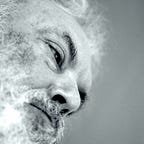An Introduction to Chinese Traditional Medicine
Adapted from Penelope Ody, The Chinese Medicine Bible:The Definite Guide to Holistic Healing, New York: Sterling, 2010.
Introduction
Chinese medicine begins with myth — around 5,000 years ago there lived two great emperors, the Yellow, Huang Di, and the Red, Yan Di. The Yellow Emperor taught mankind to weave silk, play musical scales and practice the martial arts while the Red Emperor was the first to cultivate the five grains (millet, rye, sesame, and two types of wheat), introducing agriculture to the world and earning the title Divine Farmer or Shen Nong.
Shen Nong was the first to make tea, and he also tasted hundreds of plants and minerals to discover their medicinal properties, so tradition says, because he had a transparent body and could see the effects on himself of the various herbal brews. He is claimed as the author of China’s first herbal, the Shen Nong Ben Cao Jing (The Divine Farmer’s Herb Classic), although the book itself was compiled in more recent historic times.
Huang Di, meanwhile, was also helping mankind learn more about medicine; with the help of his physician Qi Bo, he is credited with the Huang Di Nei Jing Su Wen (usually abbreviated to Nei Jing) — the Yellow Emperor’s Classic of Internal Medicine, believed to have been written around 1000 BCE. The Nei Jing discusses the nature of yin and yang as well as the theory of the five elements and their impact on the universe, human health, and bodily functions. The book was annotated and expanded many times over the centuries with surviving texts dating from the 14th century CE.
The theories explained in the Nei Jing from the basis of traditional Chinese medicine as it is still practiced today, while the 365 herbs, minerals, and animal parts listed in Shen Nong’s herbal are among the most important Chinese remedies in current use.
Centuries of Practice
While Chinese medicine began with myth, its practice has been recorded for centuries: around 400 BCE Qin Yueren first described Chinese diagnostic techniques; acupuncture needles have been found in Han Dynasty tombs (206 BCE-CE 220); Tao Honjing in the 6th century CE expanded Shen Nong’s list of herbs to 730 remedies; while the great herbalist Li Shi Zhen (1518–1573) published his Ben Cao Gang Mu in the 1590s, listing some 1,892 remedies. Over the centuries the traditional theories were gradually expanded, with medical scholars producing detailed texts on everything from treating feverish diseases and epidemics to childhood disorders, skin problems, or acupuncture.
While the formalized theories and remedies credited to Huang Di and Shen Nong were familiar to the affluent ruling classes of Chinese society, most people depended on folk medicine and itinerant physicians so that healthcare in remote regions remained extremely basic.
All this began to change in the 18th century with the arrival of European missionaries and traders. Western-style dissections of corpses — previously banned — demonstrated the true function of various organs. Chinese doctors began to travel abroad to study this new medicine with the first student, Huang Kuan, arriving at Edinburgh’s noted medical school in the 1850s. By the beginning of the 20th century China had its own colleges teaching Western medicine and traditional techniques were largely dismissed as unscientific.
Traditional Medicine in a Modern Age
Perhaps the most famous of China’s Western-style doctors was Sun Yatsen (1866–1925) who led the revolution that overthrew the last Qing emperor in 1911. Sun had studied medicine in Guangzhou (Canton) and Hong Kong and practiced at a Macao hospital before taking to politics. He was a keen advocate of Western medicine, and the new Nationalist government imposed restrictions on the traditional techniques by banning new colleges and strictly controlling practice. The strategy met with considerable resistance and compromise became inevitable: research into Chinese remedies was undertaken to demonstrate their efficacy in scientific terms, and attempts were made to merge Western and traditional Chinese medical theories.
Under Mao Zedong in the 1950s, new traditional Chinese medicine colleges were established in Shanghai, Liaoning, Zhejiang, and Henan, along with many factories producing pills and powders based on traditional prescriptions.
Today, traditional Chinese medicine is available throughout China, as is our familiar Western medicine, with patients able to choose treatments from either discipline — or indeed, to opt for the many regional folk cures which still survive.
